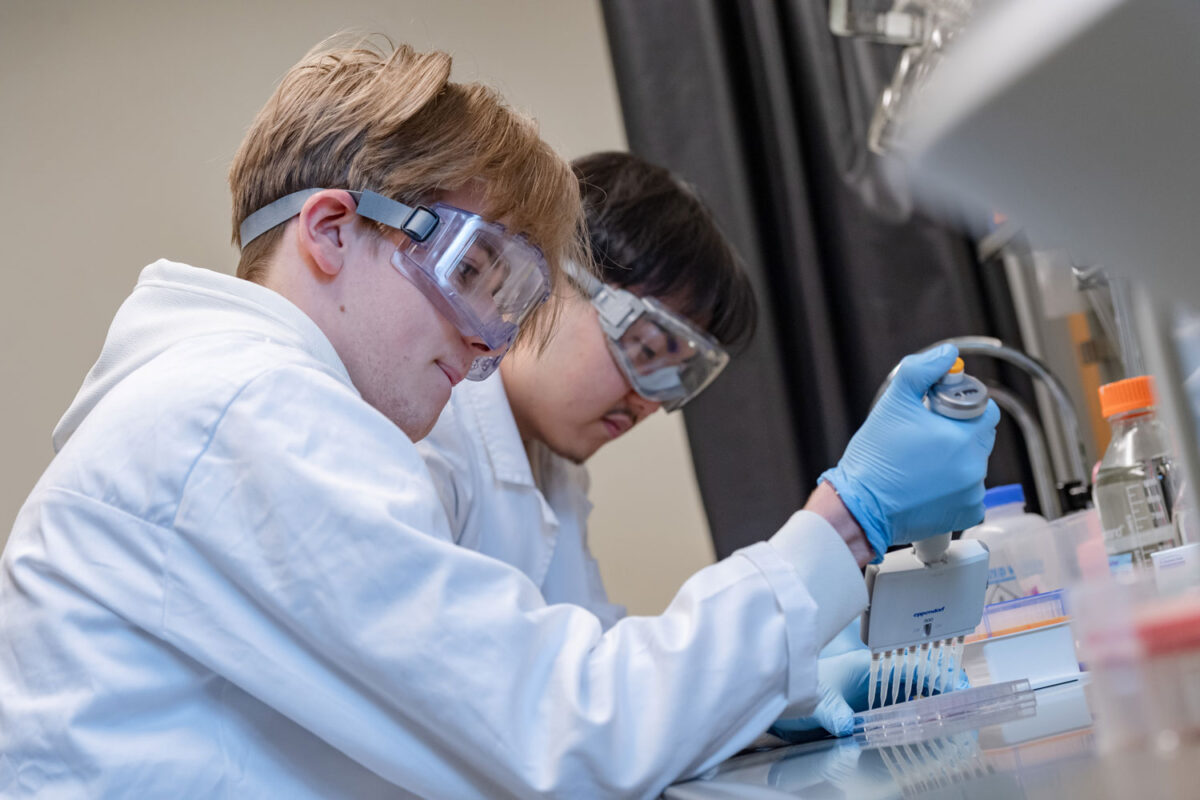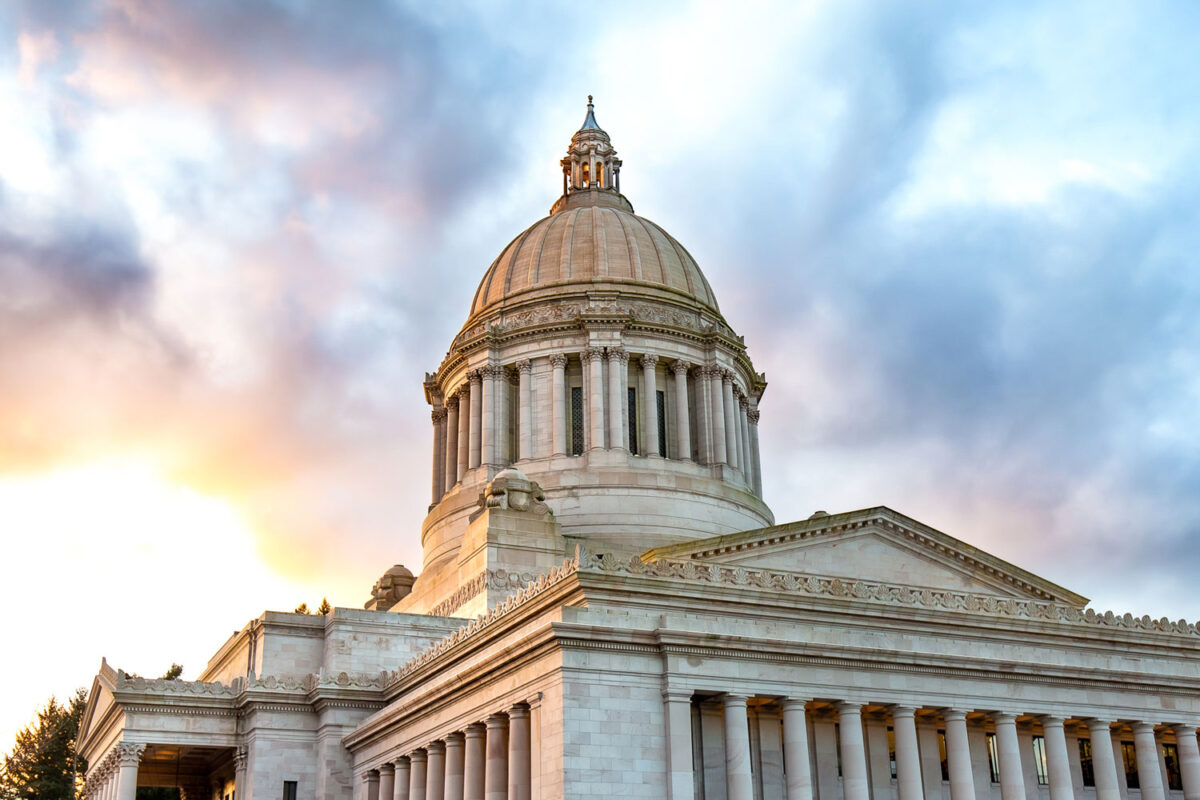Video by Jama Abdirahman
Story by Douglas Esser
There are about 320 trees on the upland portion of the University of Washington Bothell campus above the wetlands. Now, students have started carefully measuring every one of these trees at a new level of arboreal precision.
Where pioneer loggers once cleared the hillside with saws and axes, the students are scrambling around the second-growth tree trunks with laser and GPS devices and hand-cranked yellow measuring tapes. These tools help calculate the canopy dimensions of each tree. Instead of running timber through a sawmill, they run the information through U.S. Forest Service software called i-Tree for something else of value: every tree’s utility to the ecosystem.
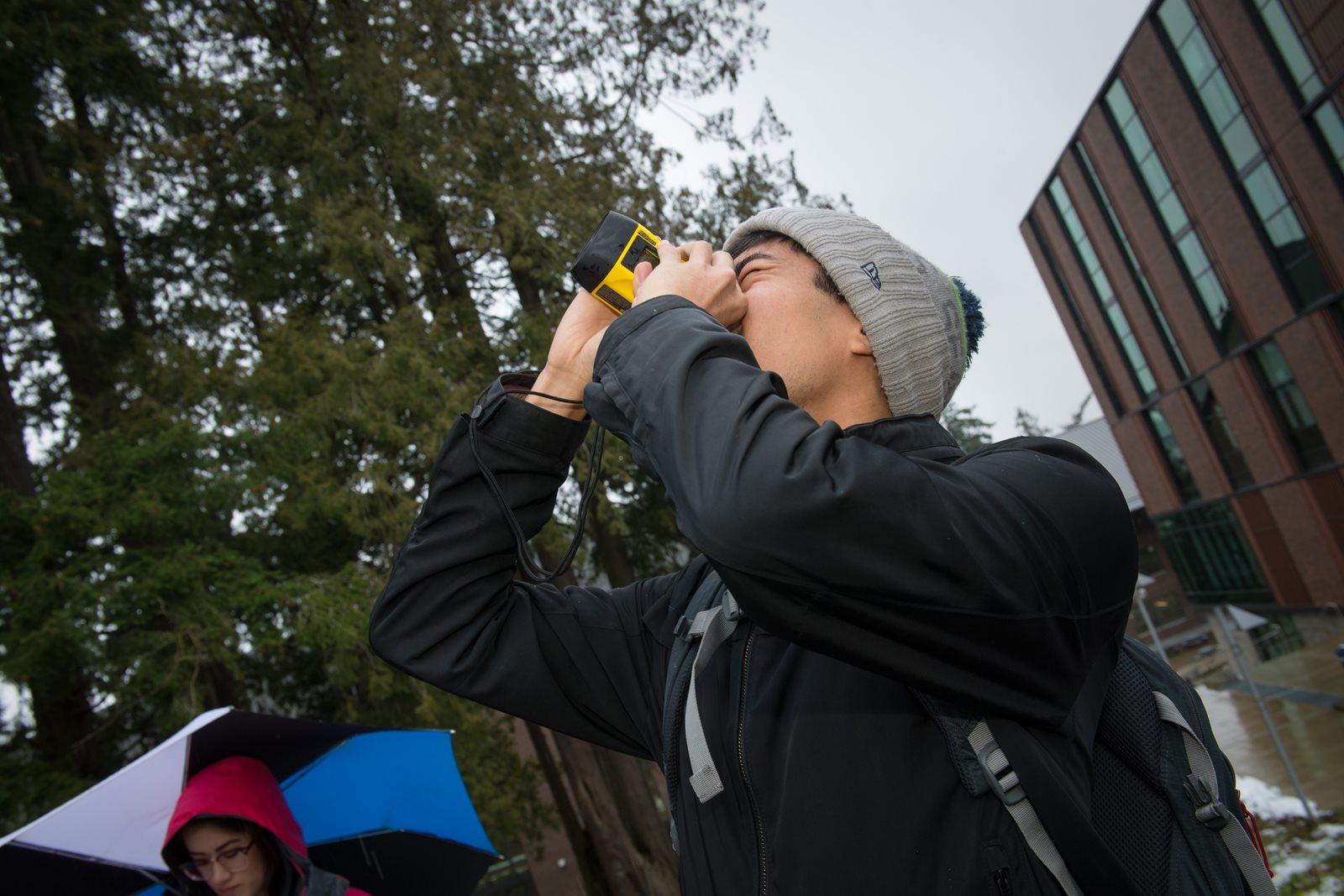
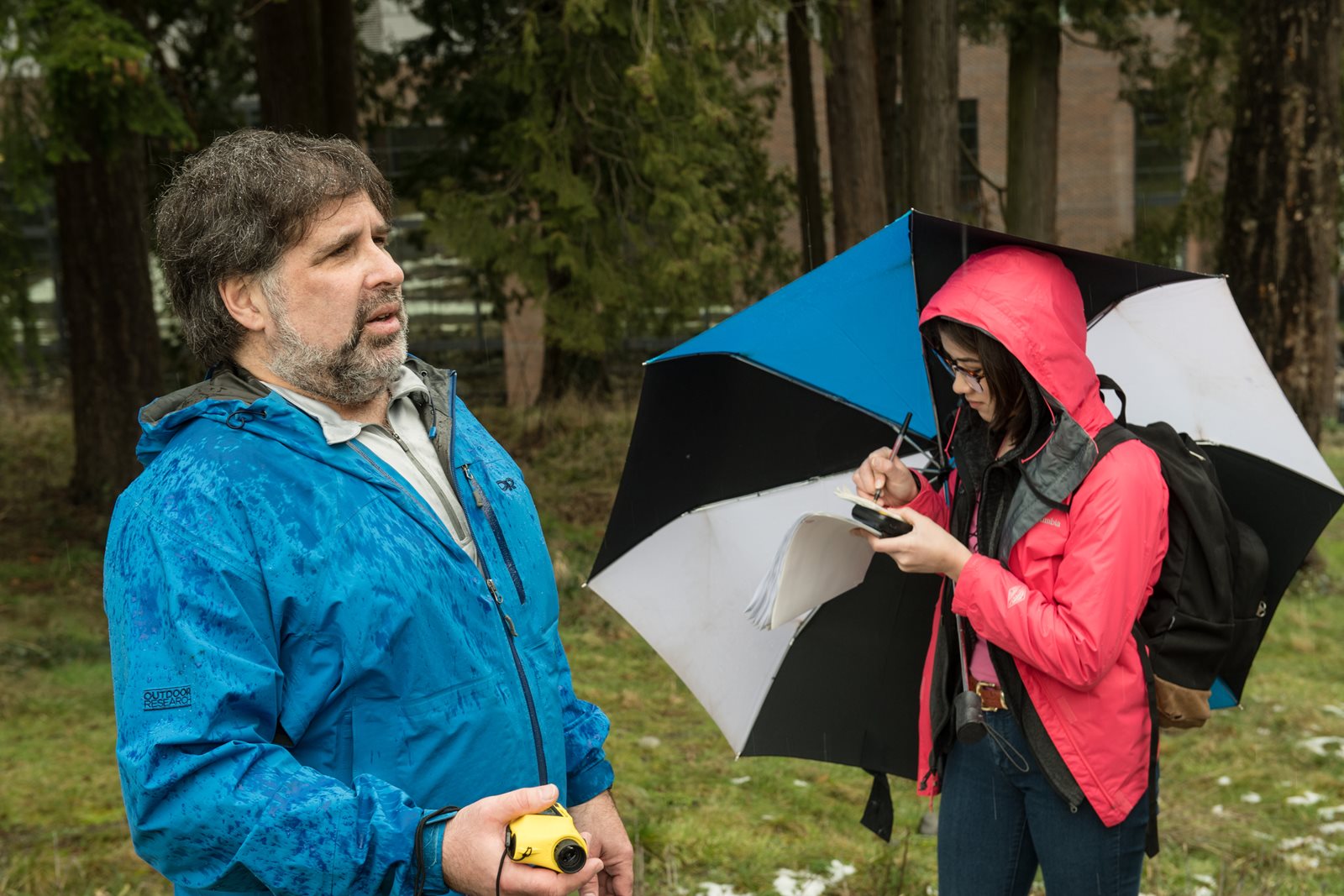
For example, they’ll be able to quantify the amount of carbon a single tree takes up. That balances a certain number of automobile trips.
“These large trees are incredibly valuable in terms of offsetting carbon input into the atmosphere,” says Warren Gold, left, associate professor of environmental science. In addition to carbon sequestration, the inventory can put a number on the value of a tree’s stormwater interception and filtration, air pollution mitigation and heating and cooling influence, Gold says.
The existing trees throughout campus are considered a valuable asset and have been taken into account during the master planning process. Each year, more than 300 trees are planted at UW Bothell, with the majority being planted in the restored wetlands and others as part of landscape maintenance.
As with many things on the green part of campus, the idea for the new inventory was planted by Tyson Kemper, grounds supervisor, who has one foot in academics and the other in the landscaping. He says the last tree health inventory in 2005 produced an Excel file and tree locations hand-sketched on a campus map. Now they’re using digital tools and geographic information systems.
“This new inventory brings in the power of GPS and GIS to build a rather interactive and multiuse GIS map layer for campus trees which will have all the tree data (lat/long., species, size, health, etc.) imbedded in the points upon the map,” Kemper says.

It will be a powerful tool for the campus community.
“We will for the first time be able to visualize such things as the distribution of tree species, size and health across campus with the power to overlay additional GIS layers and see how our data relates to campus use patterns and development, soil types, past disturbance regimes,” Kemper says.
The inventory helps fulfill the UW’s goal of sustainability. Sound science informs campus decisions. With partners in the Schools of STEM and Interdisciplinary Arts & Sciences, plus Cascadia College, students gain field experience.
“We’re going to have a very nice database at the end,” says Santiago Lopez, an associate professor who teaches geographic information systems. Four students from his class volunteered to start in winter quarter, working in snow and freezing rain.
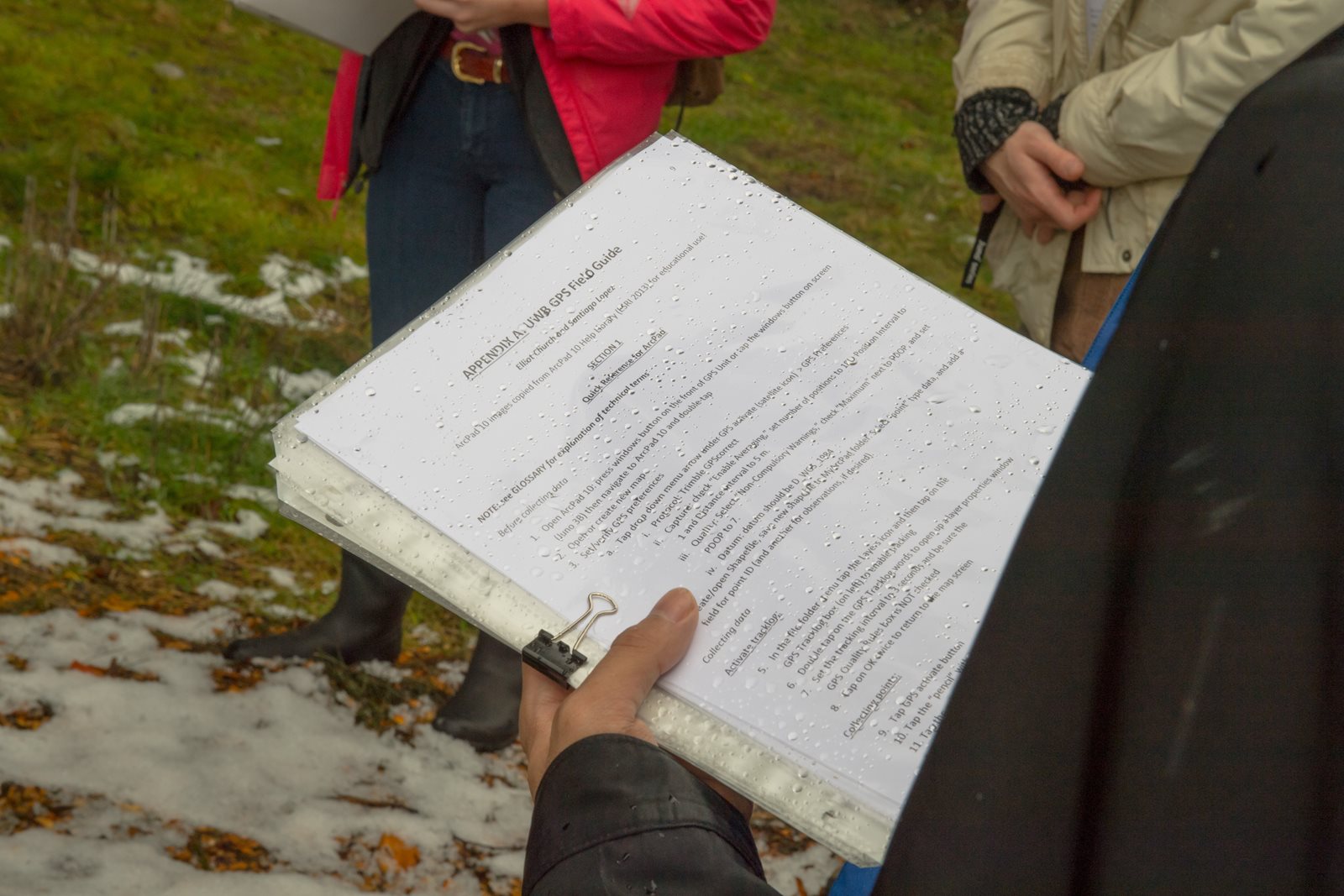
The team also was made up of a Cascadia student working on a capstone project and Jessica Kunder (biology ’18), a paid student coordinator, who learned about it from one of Gold’s classes.
“My involvement in this project has helped me not only to establish meaningful bonds with my peers and faculty here at UW Bothell, but to also foster a deeper understanding and appreciation of the natural world around me,” Kunder says.
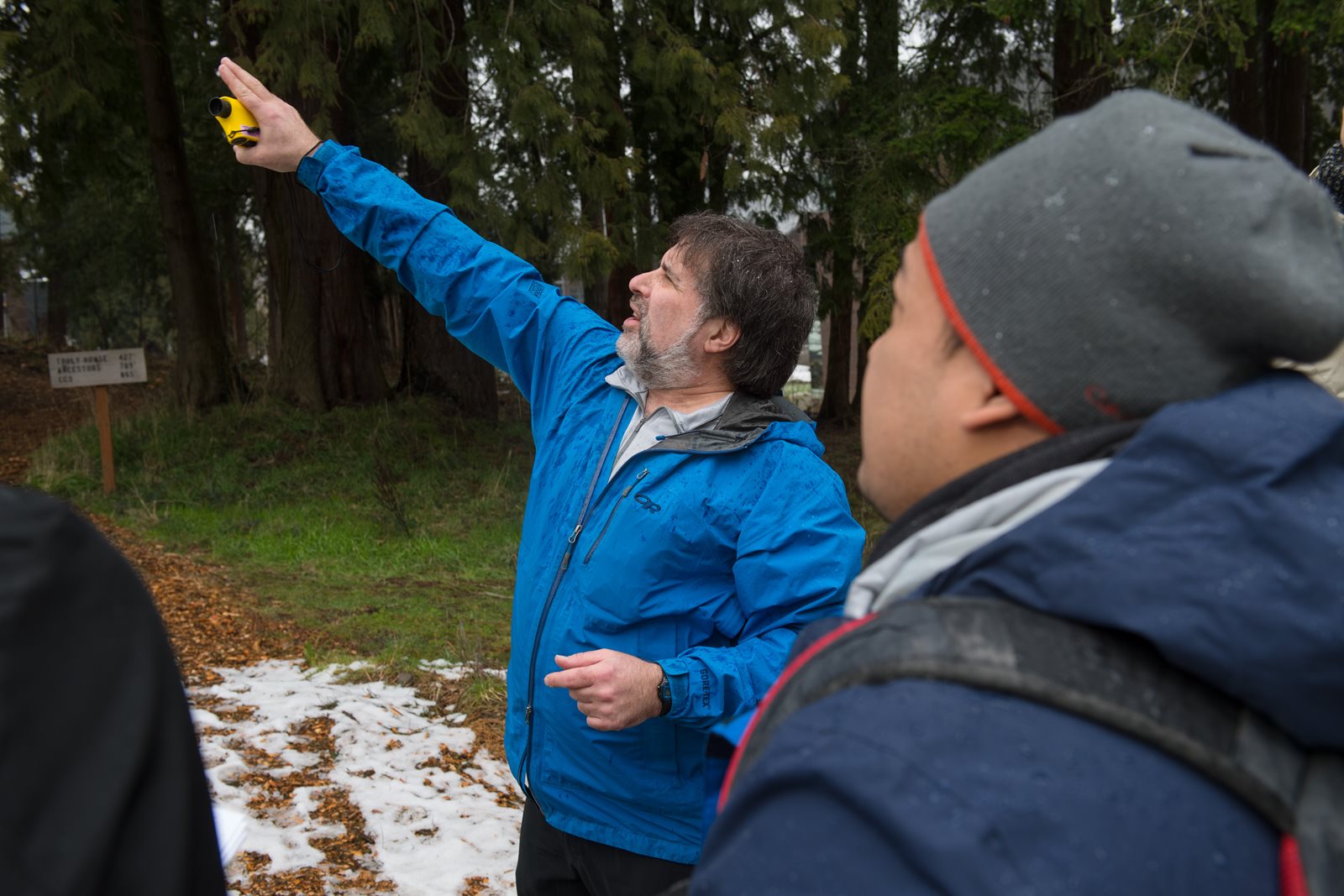
Gold welcomes more students who are needed to continue the work. He finds students are passionate about their environment.
“It makes them feel like they’re having an impact – and they are – on the place where they’re going to school. Really making a difference, understanding the world they’re living in right here.”
(Mark Studer photos)

